The ARM vs x86 Wars Have Begun: In-Depth Power Analysis of Atom, Krait & Cortex A15
by Anand Lal Shimpi on January 4, 2013 7:32 AM EST- Posted in
- Tablets
- Intel
- Samsung
- Arm
- Cortex A15
- Smartphones
- Mobile
- SoCs
Krait: WebXPRT 2013 Community Preview 1
I also included Principled Technologies' new HTML5/js web test suite WebXPRT in our power analysis. Intel and Qualcomm remain quite close in these tests. I didn't run the Qualcomm tests at the same time as the Intel tests the charts graphs aren't perfectly aligned, as a result it looks like Intel took longer to complete the test when in reality the opposite is true. Once again at the platform level, the W510 beats the XPS 10, but at the CPU level Krait manages to do better than Atom. Looking at GPU power consumption alone, Intel/Imagination are once again more power efficient. As 3D performance doesn't matter much here, the Qualcomm/Adreno 225 3D performance advantage does nothing - it just costs more power.
Once again there's no contest when we include Tegra 3 in the comparison. Atom/Krait are in a different league. It'll be interesting to see how Tegra 4 will do here...
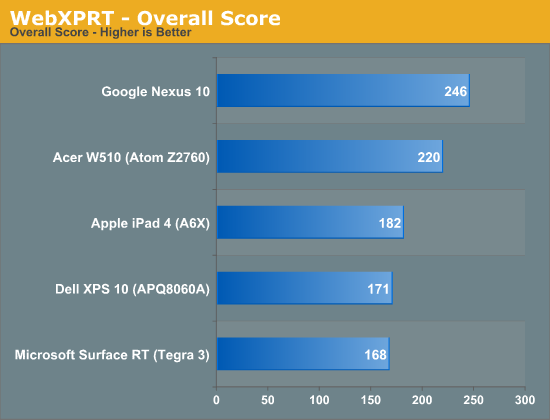
TouchXPRT 2013
As our first native client test, we turned to PT's TouchXPRT 2013. As there is no "run-all" functionality in the TouchXPRT benchmark, we had to present individual power curves for each benchmark. Unlike the previous tests where Qualcomm was consistently slower than Intel, many of the TouchXPRT tests show the two competitors performing quite similarly. This gives us a better idea of how these two fare when performance is equal. For the most part, Acer/Intel seem to win at the platform and GPU levels, while Qualcomm takes the win at the CPU level. Once again, it's not abundantly clear to me how much of Qualcomm's CPU core power advantage is due to the fact that we're not taking into account power consumption of the L2 cache.


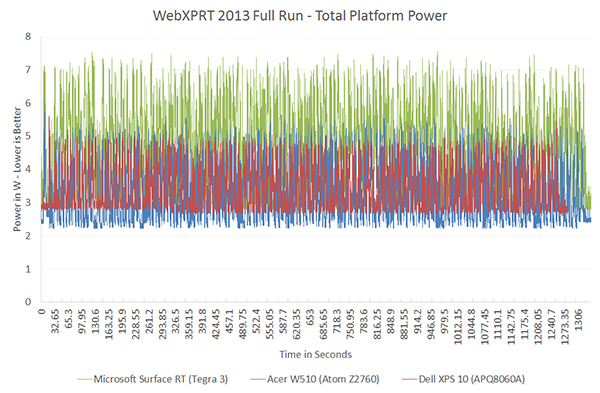
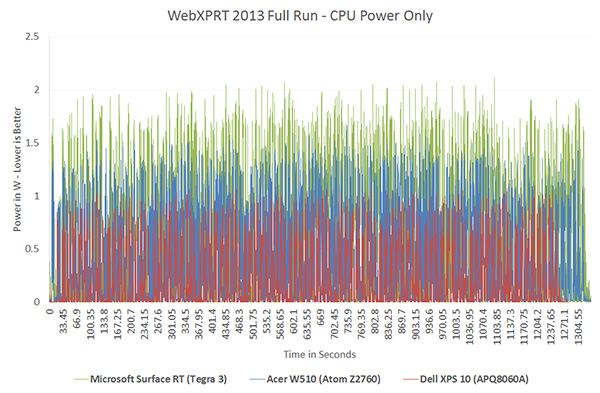
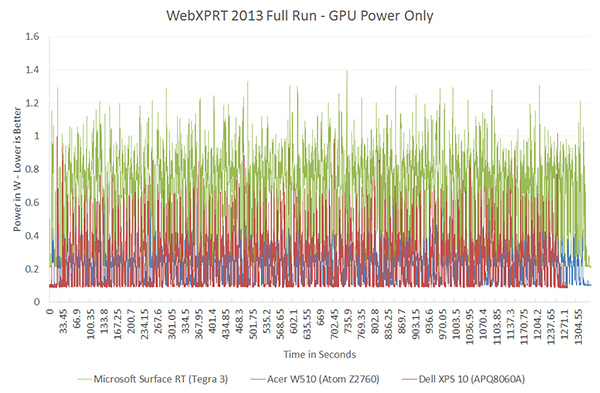
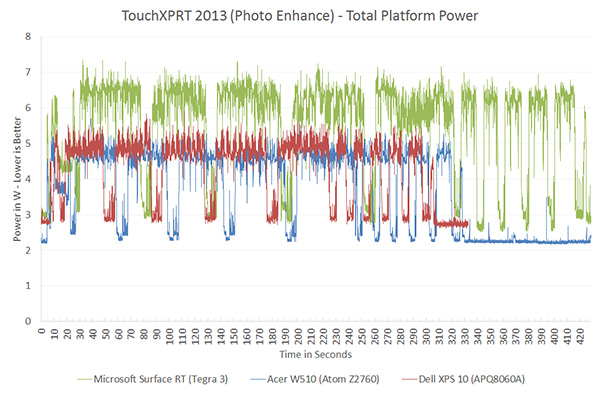
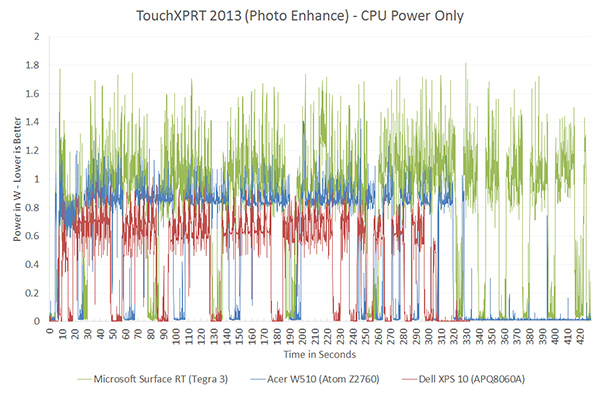
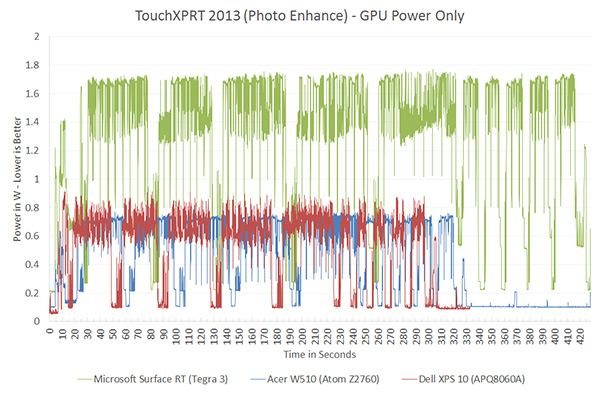

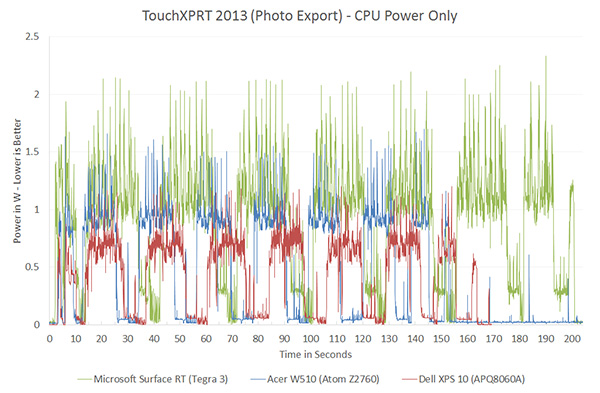

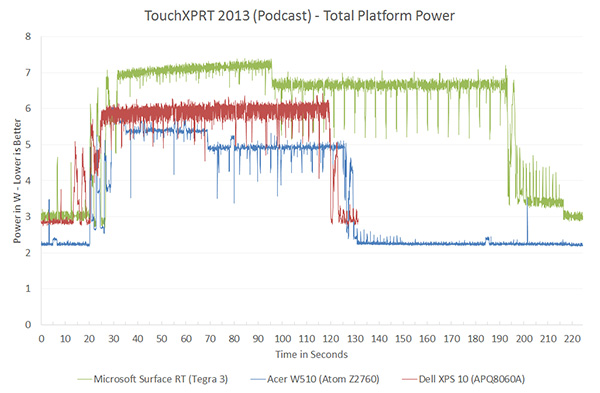
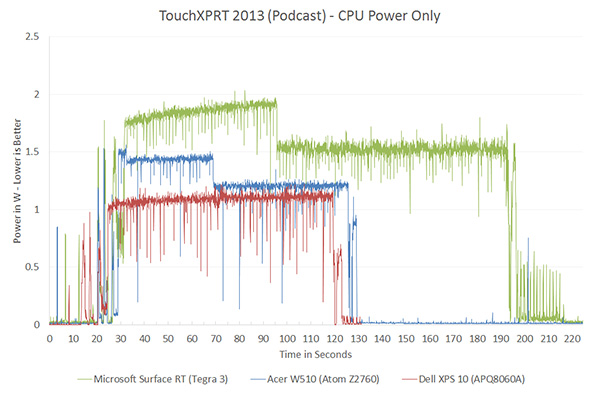
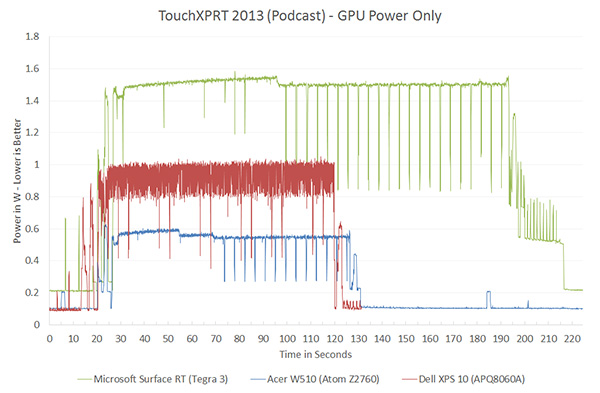
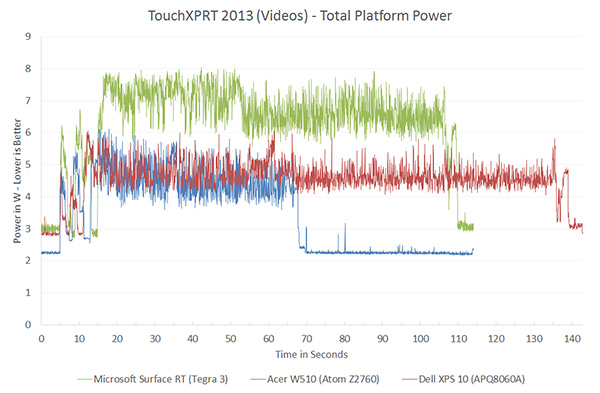

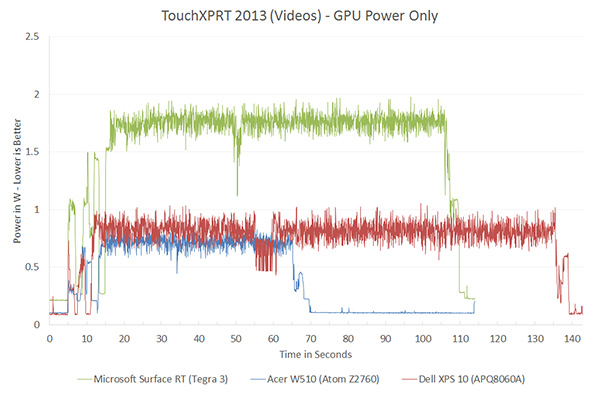








140 Comments
View All Comments
metafor - Friday, January 4, 2013 - link
It matters to a degree. Look at the CPU power chart, the CPU is constantly being ramped from low to high frequencies and back.Tegra automatically switches the CPU to a low-leakage core at some frequency threshold. This helps in almost all situations except for workloads that constantly keep the CPU at above that threshold, which, if you look at the graph, isn't the case.
That being said, that doesn't mean it'll be anywhere near enough to catch up to its Atom and Krait competitors.
jeffkro - Saturday, January 5, 2013 - link
The tegra 3 is also not the post powerful arm processor, intel obviously chose it to make atom look better.npoe1 - Wednesday, January 9, 2013 - link
From one of Ananad's articles: "NVIDIA recently revealed it was doing something similar to this with its upcoming Tegra 3 (Kal-El) SoC. NVIDIA outfitted its next-generation SoC with five CPU cores, although only a maximum of four are visible to the OS. If you’re running light tasks (background checking for email, SMS/MMS, twitter updates while your phone is locked) then a single low power Cortex A9 core services those needs while the higher performance A9s remain power gated. Request more of the OS (e.g. unlock your phone and load a webpage) and the low power A9 goes to sleep and the 4 high performance cores wake up."http://www.anandtech.com/show/4991/arms-cortex-a7-...
jeffkro - Saturday, January 5, 2013 - link
A15 currently pulls to much power for smartphone but it makes for a great tablet chip as well as providing enough horse power to power basic laptops.djgandy - Friday, January 4, 2013 - link
The most obvious thing here is that PowerVR graphics are far superior to Nvidia graphics.Wolfpup - Friday, January 4, 2013 - link
Actually no, that isn't obvious at all. Tegra 3 is a two year old design, on a 2 generations old process. The fact that it's still competitive today is just because it was so good to begin with. It'll be nessisary to look at the performance and power usage of upcoming Nvidia chips on the same process to actually say anything "obvious" about them.Death666Angel - Friday, January 4, 2013 - link
According to Wikipedia, the 545 is from January '10, so it's got its a 3 year old now. The only current gen thing here is the Mali. The 225 is just a 220 with a higher clock, so it's about 1.5 to 2 years old.djgandy - Friday, January 4, 2013 - link
And a 4/5 year old atom and the 2/3 year+ old SGX545 aren't old designs?Look at the power usage of Nvidia. It's way beyond what is acceptable for any SOC design. Phones from 2 years ago used far less power on older processes than the 40nm T3! Just look at GLbenchmark battery life tests for the HTC One X and you'll see how poor the T3 GPU is. In fact just take your Nvidia goggles off and re-read this whole article.
Wolfpup - Friday, January 4, 2013 - link
Atom's basic design is old, the manufacturing process is newer. Tegra 3 is by default at the biggest disadvantage here. You accuse me of bias when it appears you're actually biased.Chloiber - Tuesday, January 8, 2013 - link
First of all it's still 40nm.Second of all: you mentioned the battery benchmarks yourself. Go look at the Nexus 4 review and look how the international version of the One X fares. Battery life on the T3 One X is very good, if you take into account that it's based on 40nm compared to 28nm of the One XL and uses 4 cores.